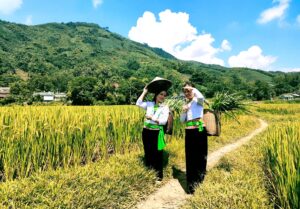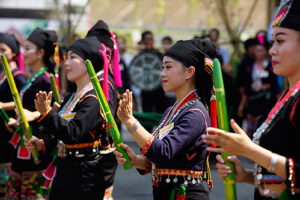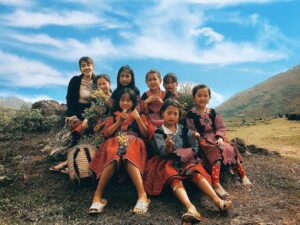Traditional Culture and Customs of the Nung Ethnic Group in Vietnam
The indigo shirt of the Nung people is associated with the story of President Ho Chi Minh, which has been passed down through generations and has become one of the most distinctive cultural symbols of the Nung ethnic group.

Belonging to the Tay – Thai language group of the Thai-Kadai language family, the Nung people are concentrated in the northeastern provinces of Northern Vietnam (Lang Son, Cao Bang, Bac Kan, Thai Nguyen, Bac Giang, Tuyen Quang, Ha Giang). The Nung ethnic group has many subgroups with different names, such as Nung Xuong, Nung Giang, Nung An, Nung Loi, Nung Phan Sinh, Nung Chao, Nung Inh, Nung Quy Rin, and Nung Din. The population of the Nung people is currently about 900,000.
For a long time, the Nung people have known how to cultivate terraced rice fields on sloped hillsides. Due to their settlement in areas with abundant forests, mountains, and valleys, the Nung are highly skilled in utilizing hillside land for farming, as well as flatlands for rice paddies. In addition to rice, their primary food source, the Nung also grow other crops such as corn, cassava, vegetables, industrial plants, and fruit trees, especially the valuable Star Anise tree, which has high economic value.
Alongside agriculture, the Nung people are also very active in animal husbandry, raising livestock and poultry. Notably, they have developed a high-yield breed of pig known as the Muong Khuong pig. “Khau Nhuc” is a unique and delicious dish of the Nung people.
In addition to agriculture, the Nung also engage in many handicrafts, mainly for everyday needs. Women cultivate cotton, spin thread, weave fabric, and dye with indigo; while men are skilled in blacksmithing, casting, basket weaving, woodworking, making “do” paper, and producing “am duong” roof tiles. The Nung people are very skilled and industrious, and their products not only serve daily needs but are also exchanged or sold to neighboring ethnic groups to increase income, improving their quality of life. As a result, many old customs and social vices have been eliminated from Nung society. Some traditional crafts, such as weaving, are gradually disappearing, while others, like blacksmithing, continue to thrive. In Phuc Sen commune (Quang Hoa district, Cao Bang), many families have blacksmith forges, and almost every household has someone who knows how to forge.
Architecture and Living Spaces
The Nung people traditionally live in stilt houses, which are built to accommodate their agricultural lifestyle and the mountainous environment they inhabit. The stilt houses are typically large and spacious, with wooden walls and roofs made from tiles. The layout of the house is symbolic, with the inner area reserved for women and children, where cooking and daily household activities take place, and the outer area for men, where ancestral worship is carried out. This division reflects the social roles within Nung families.
Stilt houses are not only practical for the mountainous environment but also carry cultural significance. The elevated design protects the inhabitants from flooding and pests, and the space underneath the house is often used for storing agricultural tools or animals. This practical design has helped the Nung people adapt to their environment while maintaining their cultural values.
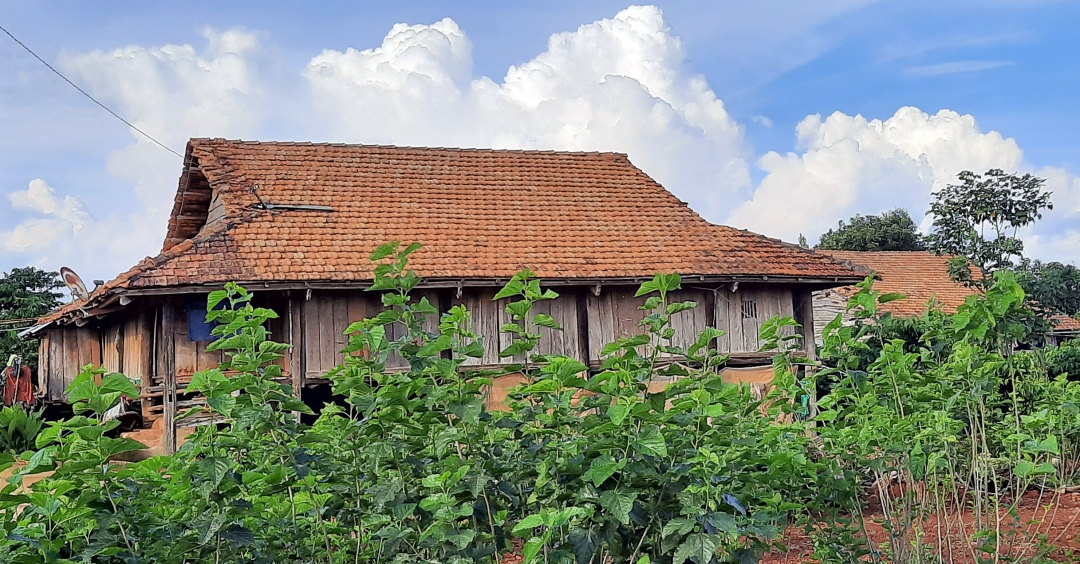
Nung villages are typically made up of several households, and each household has its own stilt house. These homes are situated close to one another, fostering a strong sense of community. The village layout emphasizes social cohesion, with shared spaces for community gatherings, rituals, and festivals. The Nung people have a deep respect for family and communal life, which is reflected in the way their homes are arranged and the way the villages are organized. The communal nature of their living spaces strengthens their collective identity and helps preserve traditional customs.
Ancestor worship is central to the Nung’s spiritual life. The altar is placed in a prominent position, decorated beautifully, with a “phung slan” written in Chinese characters at the center to indicate the family’s ancestral lineage. In addition to ancestor worship, the Nung also worship local deities, including the “tho cong” (earth god), “ba mu” (midwife goddess), and spirits of the door and the floor, performing rituals to pray for protection against natural disasters and epidemics. A unique practice in Nung life is the celebration of birthdays, while death anniversaries (like those of the Kinh people) are not commemorated.
National Costumes
The traditional attire of the Nung people is simple yet elegant. Men typically wear a stand-up collar shirt made from indigo-dyed fabric. The shirt often has a slit at the chest, with fabric buttons and either four or two pockets. Women wear a five-piece dress (five-body dress), which features a side fastening with buttons and decorative fabric of different colors around the wrist and chest. The Nung people are known for wearing indigo-dyed clothing, which plays a symbolic role in their culture, representing loyalty and traditional values.
The Nung people’s clothing is typically made from rough, handwoven fabric that is dyed using indigo, a plant-based dye that holds cultural significance. The indigo color is not just aesthetic but also represents the durability and resilience of the Nung people. The embroidery on their garments is minimal, focusing more on utility than decoration. However, some garments, particularly for women, may feature small patches of fabric in contrasting colors around the edges or cuffs, offering a simple yet graceful design.

The Nung people are known to wear gold or silver jewelry as a symbol of wealth and status. Both men and women, upon reaching adulthood, often wear a gold tooth as a decorative and symbolic mark of beauty and distinction. Women also wear various forms of traditional jewelry, such as necklaces, earrings, and bracelets, often made from silver. These accessories complement their traditional attire and reflect the status and identity of the wearer.
Marriage
The Nung people place great importance on marriage ceremonies. Although love and courtship are free, marriage decisions are made by the parents, based on whether the two families are socially compatible and whether the horoscopes of the couple match. When the Nung reach marriageable age, several key ceremonies must be held, including: “Kham lua” (a proposal ceremony initiated by the groom’s family to inquire about the bride’s family’s feelings), “Au minh” (the groom’s family formally asks for the bride’s birth year to compare with the groom’s), “Minh hom” (an agreement on the engagement ceremony’s timing and materials), and “kha cay” (the official engagement ceremony). In Nung marriage customs, the role of the matchmaker is very important. After the wedding, the matchmakers become the godparents of the bride and groom and are responsible for them as if they were their own parents.
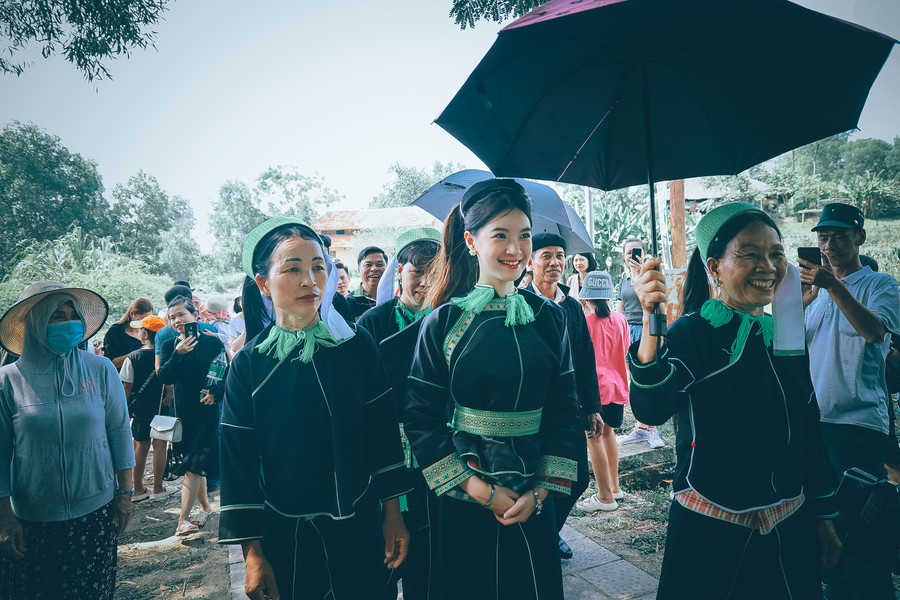
The bride’s family usually demands a dowry consisting of meat, rice, alcohol, and money. The more items given in the dowry, the higher the perceived value of the bride. The wedding includes many rituals, the most important being the bride’s procession to the groom’s house. After the wedding, the bride stays at her parents’ home until she is about to have a child, at which point she moves to live with her husband.
A unique feature of Nung weddings is the “Co Lau” duet singing. The singer must know a few traditional lines but also needs to be quick-witted in responding. The musical instruments used include the two-string or three-string “dan tinh,” “nao bat” drum, and “chum choe” bamboo instrument.
Customs and Traditions
The Nung people have a rich treasury of folklore and many traditional songs, with the Sli songs of Lang Son’s young Nung people blending with the natural sounds of the mountains, leaving a lasting impression on those who visit the region. “Then” is a folk song genre with lyrics, music, decoration, and performance forms that have stirred the hearts of many Nung youths living far from home. One of the most famous festivals attracting people of all ages is the “Lung Tung” festival (Rice Planting Festival) held annually in January.
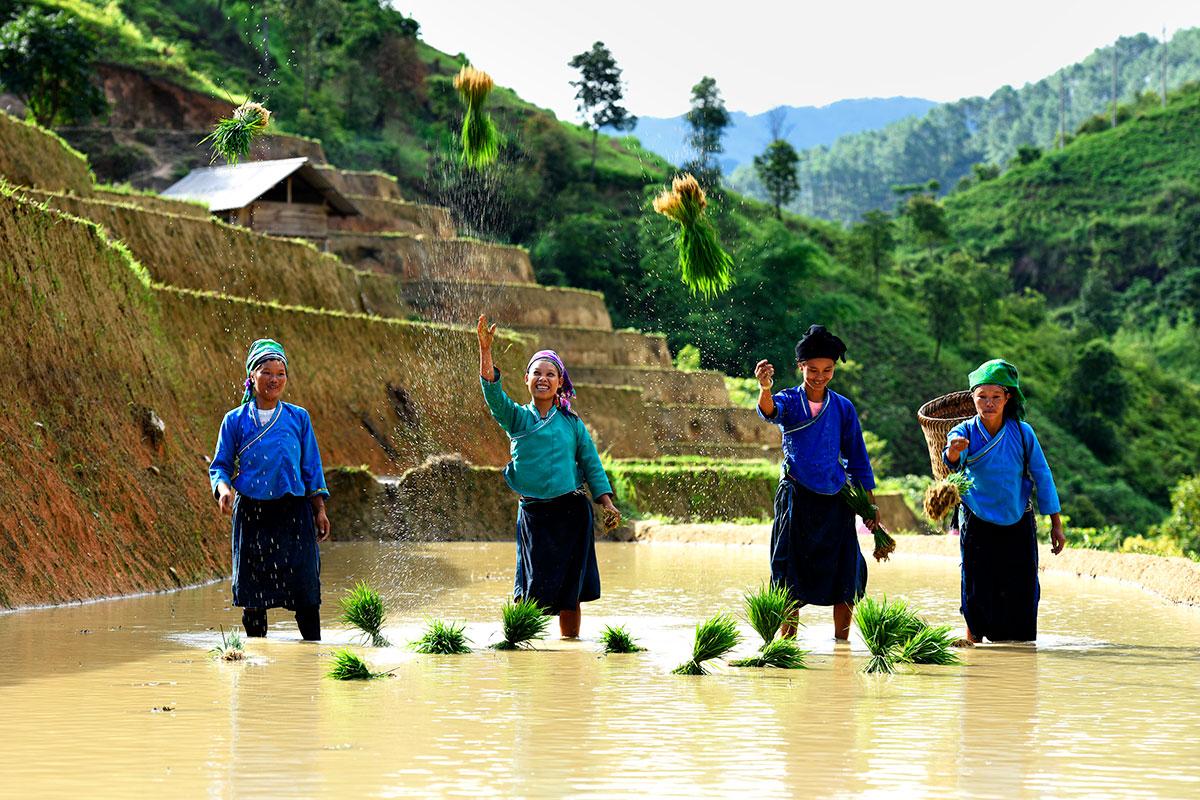
The Nung people use Chinese characters or the Nung Nom script (developed around the 17th century) to record poetry and folk tales. In the past, most Nung people were illiterate, and only the wealthy could afford to attend school, where they learned Chinese or French to become religious leaders or interpreters. Nowadays, most Nung people are literate in the national language and actively participate in the development of the economy, society, culture, education, and healthcare.

